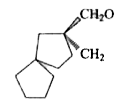Which of the following structures represents the peptide chain?
−H∣N∣−C∣∣O−∣C∣−∣C∣−∣C∣−H∣N−∣C∣−∣C∣−∣C∣−
−H∣N−∣C∣−C∣∣O−H∣N−∣C∣−O∣∣C−
−H∣N−∣C∣−∣C∣−O∣∣C−N∣H−∣C∣−∣C∣−H∣N−C∣∣O−∣C∣−∣C∣
−H∣N−C∣∣O−N∣H−∣C∣−NH−O∣∣C−NH−
The correct Answer is:B
To determine which structure represents a peptide chain, we need to understand the characteristics of a peptide bond and the structure of amino acids.
1. Understand the Structure of Amino Acids:
- Amino acids are the building blocks of proteins. Each amino acid has a basic amino group (–NH2), an acidic carboxyl group (–COOH), and a variable side chain (R group).
- The general structure of an amino acid can be represented as:
H2N–C(R)–COOH
2. Define a Peptide Bond:
- A peptide bond is formed when the carboxyl group of one amino acid reacts with the amino group of another, releasing a molecule of water (H2O).
- The reaction can be summarized as follows:
AminoAc+AminoAc→Pept+H2O
3. Identify the Peptide Chain Structure:
- A peptide chain consists of multiple amino acids linked by peptide bonds. It will have:
- An N-terminal (the end with the free amino group).
- A C-terminal (the end with the free carboxyl group).
- At least one peptide bond between two amino acids.
4. Analyze the Given Options:
- Check each option for the presence of:
- An N-terminal.
- A C-terminal.
- At least one peptide bond.
- Evaluate each structure one by one.
5. Select the Correct Option:
- After analyzing all options:
- Option A: Lacks a C-terminal and does not have a peptide bond.
- Option B: Contains both N-terminal and C-terminal, along with a peptide bond. This is the correct option.
- Option C: Lacks a C-terminal.
- Option D: Lacks a C-terminal.
Conclusion:
The correct answer is Option B, as it contains both the N-terminal and C-terminal along with a peptide bond.
---
- Amino acids are the building blocks of proteins. Each amino acid has a basic amino group (–NH2), an acidic carboxyl group (–COOH), and a variable side chain (R group).
- The general structure of an amino acid can be represented as:
H2N–C(R)–COOH
- A peptide bond is formed when the carboxyl group of one amino acid reacts with the amino group of another, releasing a molecule of water (H2O).
- The reaction can be summarized as follows:
AminoAc+AminoAc→Pept+H2O
- A peptide chain consists of multiple amino acids linked by peptide bonds. It will have:
- An N-terminal (the end with the free amino group).
- A C-terminal (the end with the free carboxyl group).
- At least one peptide bond between two amino acids.
- Check each option for the presence of:
- An N-terminal.
- A C-terminal.
- At least one peptide bond.
- Evaluate each structure one by one.
- After analyzing all options:
- Option A: Lacks a C-terminal and does not have a peptide bond.
- Option B: Contains both N-terminal and C-terminal, along with a peptide bond. This is the correct option.
- Option C: Lacks a C-terminal.
- Option D: Lacks a C-terminal.
The correct answer is Option B, as it contains both the N-terminal and C-terminal along with a peptide bond.
Similar Questions
Knowledge Check
Which one of the following structures represents the neoprene polymer?
A⎛⎜⎝−CH2−C∣Cl=CH−CH2−⎞⎟⎠nB⎛⎜⎝−CH2−CH∣CN−⎞⎟⎠nC⎛⎜⎝−CH2−CH∣Cl−⎞⎟⎠nD⎛⎜ ⎜⎝−CH∣C6H5−CH2−⎞⎟ ⎟⎠nWhich of the following structures represent meso compound?
A B
B C
C D
D
The following structures represent a pair of:
 AenantiomersBDiastereomersCmeso compoundDhomomers
AenantiomersBDiastereomersCmeso compoundDhomomers
In the male reproductive system of cockroaches, which of the following structures represents the external genitalia?
View SolutionWhich of the following structures represents neoprene polymers?
View SolutionWhich of the following structures represents female gametophyte?
View SolutionWhich of the following structure represent meso-compound ?
View SolutionWhich of the following structure represents neoprene polymer?
View Solution

